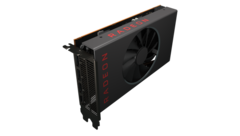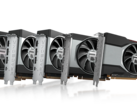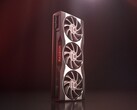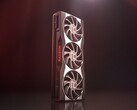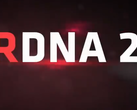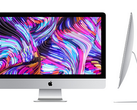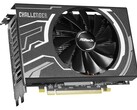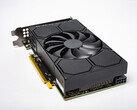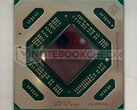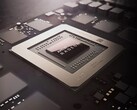Update: our source at AMD confirmed that the Radeon RX 5300
Amid the backdrop of the impending NVIDIA Ampere launch and the arrival of their own RDNA2-powered Big Navi GPU, AMD quietly released one last Navi 14 graphics card for the entry level market: the Radeon RX 5300.
AMD claims that the Radeon RX 5300 delivers significantly better performance than the GTX 1650, NVIDIA’s entry-level option. The cherry-picked benchmarks on the RX 5300 landing page paint a favourable picture for the littlest Navi. However, taking a look at the RX 5300’s spec sheet, we think that AMD might not be far off from its claims of performance superiority here.
The Radeon RX 5300 looks to be a mildly cut-down Radeon RX 5500 XT. At launch, the RX 5500 XT was a bit of an awkward part. At US$199, the 8GB variant was hard to recommend, with the substantially faster GTX 1660 Super so close to it in price. At US$169, the 4GB model delivered better performance than the GTX 1650 Super, while costing US$10 more. The Radeon RX 5300, at US$129 costs less than all of these cards, as well as the US$149 GeForce GTX 1650. What does it give up to achieve this price point?
We’re looking at the same 22 CU shader configuration in the RX 5500 XT, with 1408 shader cores. However the RX 5300 loses substantially in terms of its memory configuration. It loses a memory controller, bringing the bus width down to a measly 96-bit, the narrowest memory bus we’ve seen on a desktop part this generation. This translates to just 168 GB/s of memory bandwidth, down from 224 GB/s on the RX 5500 XT. It also means you lose 1GB of VRAM, now down to just 3GB. Power consumption is down to 100W. However, this is still higher than the 75W limit on a PCIe slot, meaning this card will need some degree of external power.
Despite the memory cutbacks, the RX 5300 enjoys a significant advantage over the GTX 1650 in terms of raw shading power. We expect AMD’s performance claims here to hold true and this card might even go neck-and-neck with the more expensive GTX 1650 Super. While we’re leery of 3GB cards in 2020, the US$129 price point makes the Radeon RX 5300 an interesting price-performance play in the entry-level segment.


 Deutsch
Deutsch English
English Español
Español Français
Français Italiano
Italiano Nederlands
Nederlands Polski
Polski Português
Português Русский
Русский Türkçe
Türkçe Svenska
Svenska Chinese
Chinese Magyar
Magyar